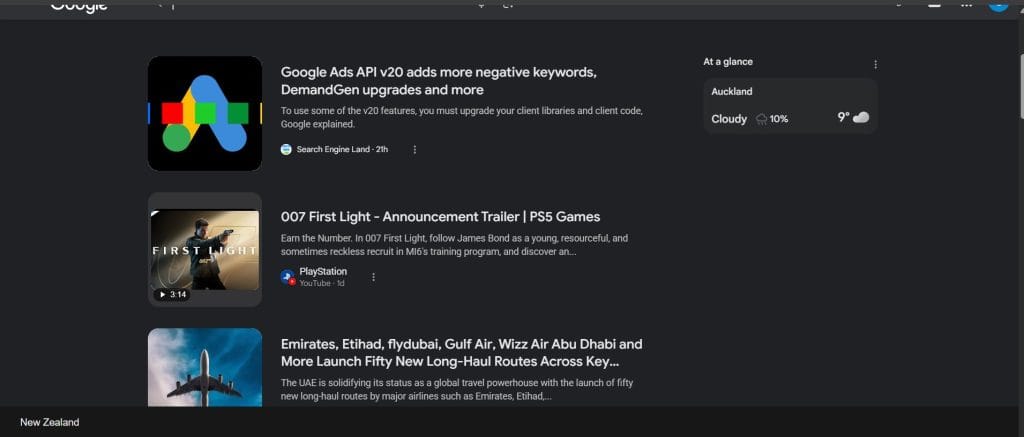Alright, here’s something good for all the website folks and publishers out there.
Looks like Google Discover is starting to show up for desktop users now, all over the world.
It’s already being tested in a few places — New Zealand, for example. And yeah, this is coming from Search Engine Roundtable, which is usually pretty solid when it comes to updates and changes from Google. So it should be going global soon.
If you’ve used Google Discover on your phone, you know how it works. It’s there in the Chrome app or Google app — shows you stuff you’re probably interested in, kind of like a feed. Now, that same feature is about to show up on desktop too.
So what does it actually look like on desktop?
The Google homepage has always been plain — clean white page, logo, search bar, that’s it. But now for the first time, people are gonna see Google Discover sitting right there under the search box.
Scroll down to check the images. It’s a bit of a change.


Why This Is a Big Deal for Publishers
With the rapid growth of AI tools like ChatGPT and Google’s own AI-powered answers, many publishers have seen changes in how users access content. Traditional search traffic is evolving, and Discover presents a fresh opportunity.
Google Discover can drive massive bursts of traffic to websites — often without the long wait for SEO to take effect.
Based on current patterns, a single featured story in Google Discover can send anywhere from 2,000 to 250,000+ visits, depending on how well the content performs and engages users.
Articles may remain active in Discover for anywhere from an hour to a week or longer, depending on their engagement.
How Does Discover Work?
You can think of Discover as functioning somewhat like TikTok’s feed — but for web content instead of videos.
Discover initially tests an article with a small audience:
- If the article receives strong engagement, it is shown to more users.
- If it underperforms, it quickly fades from the feed.
This means that content quality and relevance are more important than ever.
You don’t need extensive SEO or backlinks to succeed — what you do need is a genuinely valuable and well-researched article that resonates with your readers.
Who Can Get Featured in Discover?
Any website, whether new or established, can appear in Discover, provided it adheres to Google’s Discover and Publisher Content Policies.
Key factors that influence inclusion in Discover:
- Original and engaging content
- Strong E-E-A-T (Experience, Expertise, Authoritativeness, Trustworthiness)
- Fast loading and mobile-friendly design
- Clean and user-friendly layout without intrusive ads
Page speed is critical.
You can test your site using Google PageSpeed Insights — achieving a green score significantly improves your chances of being featured in Discover.
Prepare Your Hosting for Traffic Spikes
One important point many publishers overlook: Discover sends traffic in bursts.
If your article performs well and is featured, you may see 1,000 to 2,000 users online simultaneously. Make sure your hosting plan can handle such spikes to avoid downtime or poor user experience.
Conclusion
At a time when AI and changing search behavior are reshaping web traffic, Google Discover offers publishers a new path to visibility.
Focus on creating high-quality, original content that serves your audience.
Optimize your site’s speed and structure.
And you may find Discover becoming one of your top traffic channels — without the need for months of SEO or heavy backlinking.
